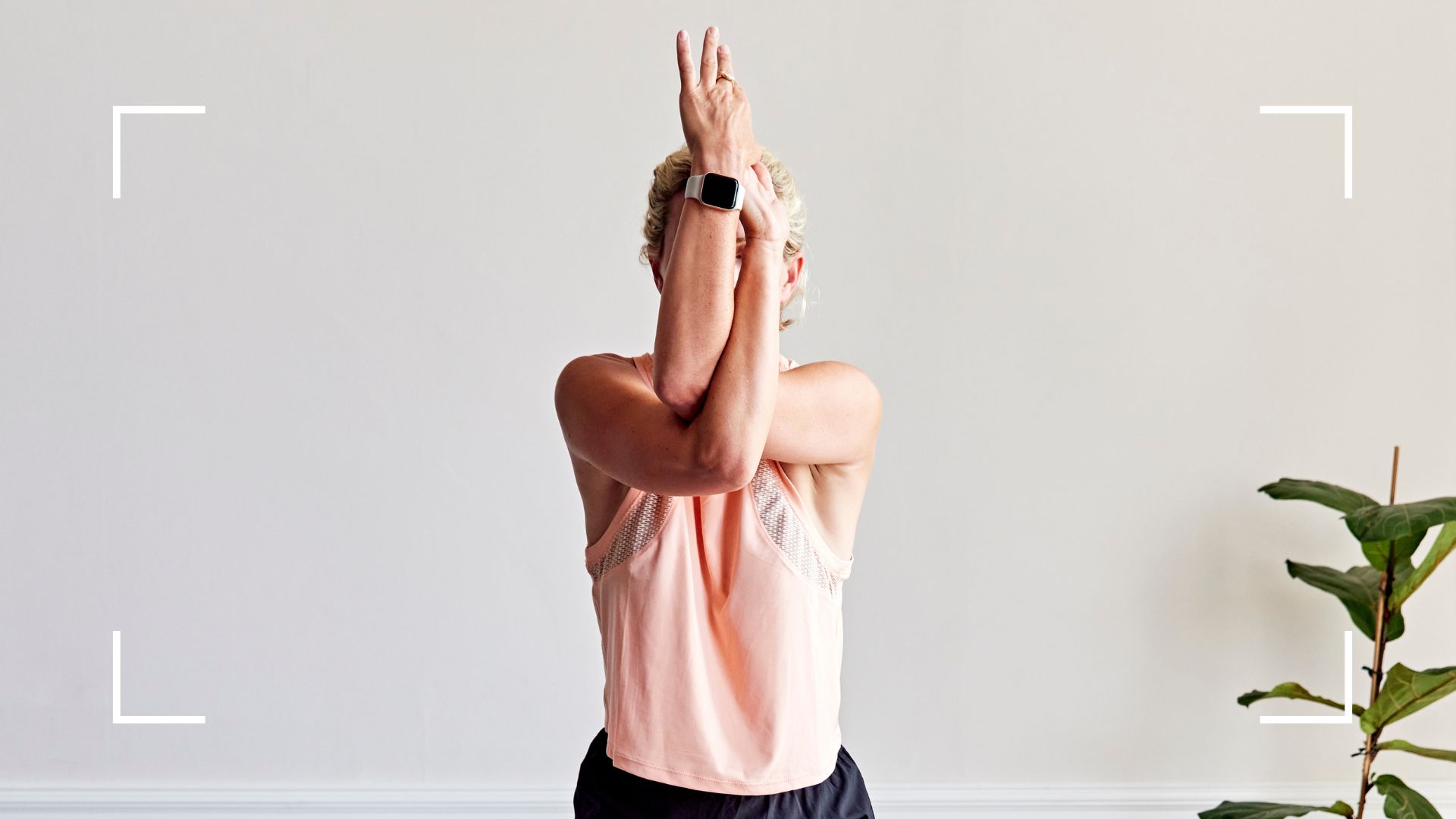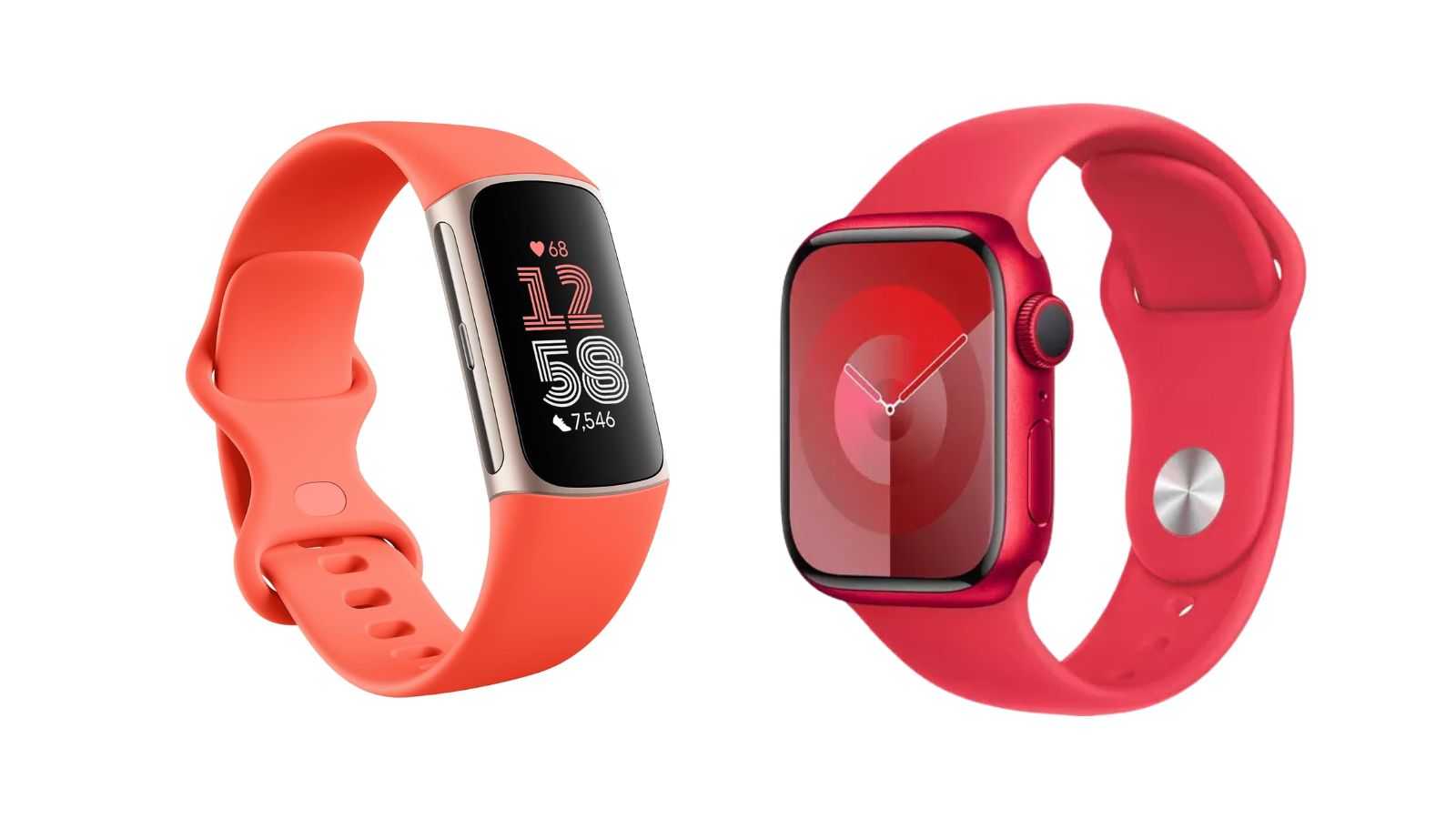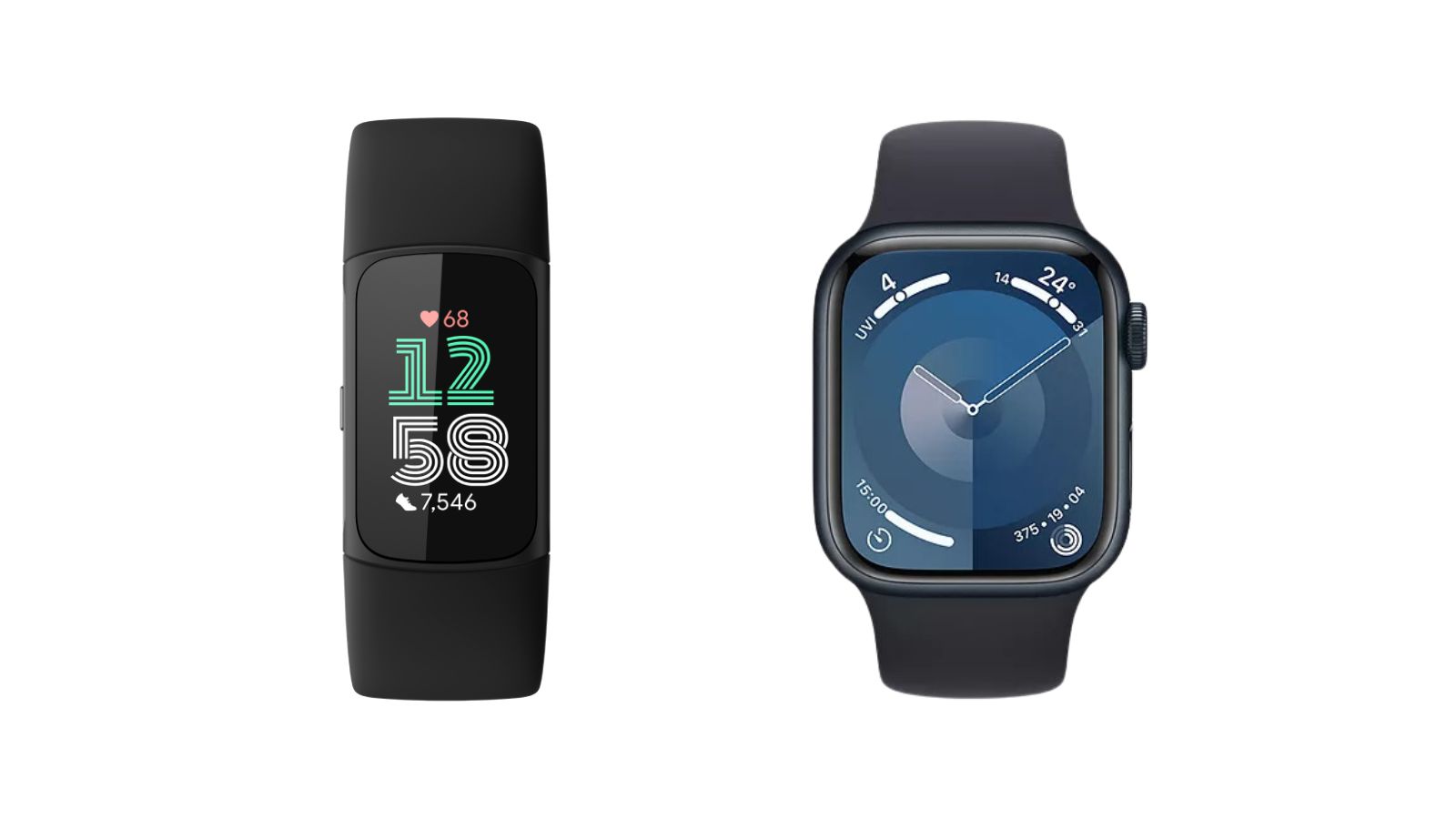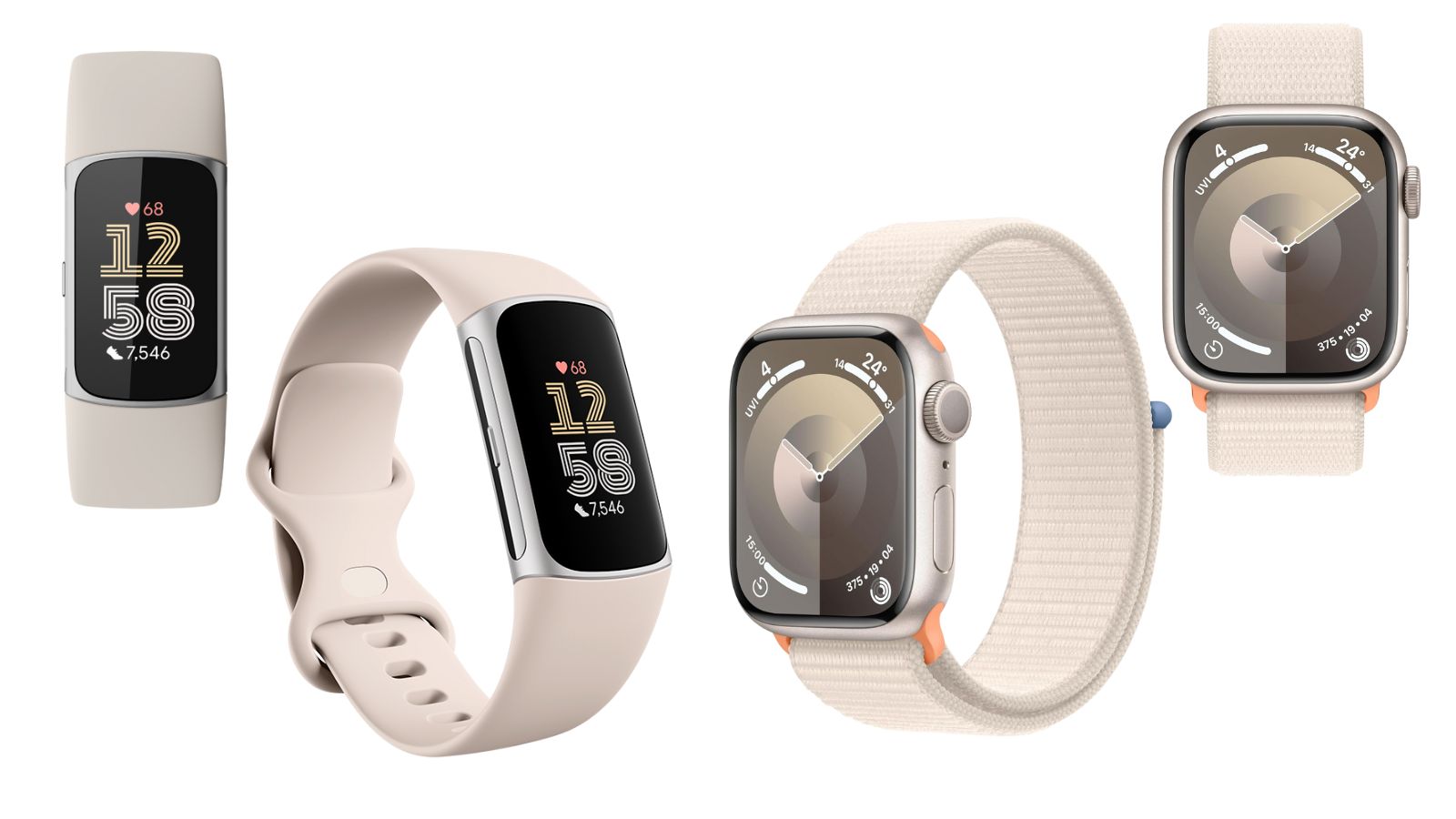
You may be deciding between a Fitbit or Apple Watch if you're looking for a fitness tracker. As two of the biggest players in the market, both devices promise to transform your workout by motivating you to push yourself, track your progress, and serve up many other health-related perks.
There's a lot to consider if you're after one of the best fitness trackers to achieve your goals. At woman&home, we've already compared the Garmin versus Fitbit, and when looking at how the latter compares to the Apple Watch, we'll be evaluating each of their pros and cons. This includes things like movement tracking and sleep monitoring, as well as the ease of use when it comes to their design and whether you'll be getting value for money.
If there's one thing to know before buying a fitness tracker, it's that you should always do your research first. There are a variety of models available among the best Fitbits and Apple Watches, so in this instance, we'll be looking at the latest from each - the Fitbit Charge 6 and the Apple Watch Series 9. Let us help you decide which will help you log the best results.
Fitbit or Apple Watch: 6 things to consider
1. Movement tracking
If you're weighing up a Fitbit or Apple Watch, it's likely fitness tracking is important to you. In the same way as other Fitbits, the Charge 6 tracks usual metrics like steps, distance and calories, while also monitoring your heart rate to see how long you spent in elevated zones during a workout. Compared to the Fitbit Charge 5, the brand's previous model, this is 60% more accurate for activities like HIIT, spinning and rowing. Other handy tools include being able to sync it up to compatible exercise machines - like popular brands of treadmill and rower - and if you forget to tell it you've started a session, the SmartTrack feature has already recognised and started recording.
Moving on to the Apple Watch's Series 9, where you'll find many comparable features. Like other devices from the brand, one of its core components is how it encourages you to move, whether to get up from your desk or go to workout. Its dedicated Activity app features colour-coded 'rings' that show at a glance how far off you are from reaching your goals of calories burned, how many times you've stood and moved for at least one minute per hour or minutes of brisk activity done. Adding to this workout motivation is the ability to see your 'Heart Rate Zones' during exercise - with the option to log one of 12 activity types, including running and yoga - and if you forget there is also automatic movement detection.
2. Workout tool
One of the main areas of improvement from both the Fitbit and Apple Watch is how they not only encourage you to lace up your trainers but also guide you through an effective training session.
For instance, one of the arguments for Fitbit Premium vs free is that the subscription provides access to a library of workouts, from HIIT to strength training, led by qualified instructors. If you're a fan of running or going out for a cycle but hate having to keep looking at your phone for the route, then the Fitbit Charge 6 - which comes with Google Maps integrated - will provide you with turn-by-turn directions via your headphones. This is a unique feature of the device and not included in other types of Fitbit, newly integrated after the brand moved over to Google a couple of years ago.
It's the same with the Apple Watch, where you can access the brand's extensive workout content via its Apple Fitness+ platform, one of the best workout apps overall. Many virtual sessions can be completed in the comfort of your own home, but the Time To Walk and Time To Run features encourage you to get active outside - enabling you to move along to guided audio tracks that blend coaching, stories and music. Struggle to stay engaged? Apple has also created 'Collections', which are a series of workouts and meditations to follow - these include a 30-day core challenge to tone your abs, as well as a course to help you improve your posture with wall Pilates.

3. Sleep monitoring
One of the more useful features of these trackers is their ability to help you learn how to sleep better. Fitbit has its 'Sleep Score' - which is based on sleep duration, sleep quality and restoration - and that will be provided to you out of 100 in the morning via the app. The device assumes that if you haven’t moved for about an hour then you've likely nodded off, and it uses a combination of your movement and heart-rate patterns to see whether you are in the light, deep or REM stages of sleep. You can also use it to wake you up via the Alarm app.
Similarly, monitoring sleep is also a big part of the Apple Watch's offering. It can estimate the time you spent in each of the aforementioned sleep stages, as well as when you might have woken up, by using a heart rate sensor and also an accelerometer - which is a device that detects motion. In the morning, you can open up the Sleep app to see how much quality shut-eye you really had. Like the Fitbit, you can set an alarm to wake you up - and there's also the option to create sleep schedules and sleep goals if you want to clock a particular number of hours of shut-eye.
4. Cycle tracking
While you may have been using one of the best health apps downloaded to your phone, it's worth noting that you can also monitor your cycle via your wrist as well - which can be rather handy if you remember to log the arrival of your period or certain menstrual symptoms while on the go. With this in mind, Fitbit offers 'female health tracking', and based on the data you input it can also estimate things like when your next period is due, the day of ovulation and your most fertile window. For those in perimenopause, this may be particularly useful.
It's a similar offering over on the Apple Watch, where you can keep an eye on your menstrual cycle using the Cycle Tracking app. There's space to log information about your flow and record symptoms, like cramps or mood fluctuations. However, what sets it apart from the Fitbit in this area is the feature that allows it to use wrist temperature data to more accurately estimate your likely day of ovulation.

5. Health monitoring
Features such as movement and cycle tracking have been around for a number of years, but we are now seeing fitness trackers get to grips with other areas of our health. The Fitbit has an ECG app, which can notify you of heart rhythm irregularities. Although it's not a diagnostic tool, if this is something you need to look out for, it can be handy data to take to your doctor.
There is also an EDA sensor that reveals how your body is responding to stress. Indeed, the 'Daily Readiness Score' - which compares your recent activity, sleep and heart rate variability levels against your personal baseline - will share if it thinks you can go all out with a strength training workout or if you need to take a rest day.
Similarly, the Apple Watch also has an ECG, which will alert you to any heart rhythm irregularities and both devices have a 'Blood Oxygen' feature which measures the oxygen level of your blood, providing you with early insights into whether something might be amiss with your health and if you should see a doctor. Given all the health data that is being accumulated by the device, they insist they keep everything private and secure, with you being the only person with the power to share such personal information.
6. Design
The Fitbit might not boast as sleek a design as the Apple Watch, but it more than makes up for it in functionality. You can use the device to access Google essentials, like Maps, Wallet and YouTube Music controls, and it also has an impressive seven-day battery life if you're the kind of person who always forgets to put your tech on charge or is travelling off the grid.
After complaints about previous models from users though, the brand has re-added the useful side button to the design of the Charge 6 so it's now easier to turn the screen off and on. What's more, there's the option to add some personality, with a variety of colour and strap options to choose from.
Meanwhile, the Apple Watch still retains its iconic design, which also comes with a variety of case and strap options depending on your taste. It is also surprisingly durable, being water resistant to 50m (much like the Charge 6) and made to be resistant to cracking (which the Charge 6 does not promise). Just like the brand's other products, it is also incredibly easy to use, and now with new 'Gestures' allowing you to tell it to do something even if your hands are full. Like answering a call, opening a notification or playing and pausing music. However, its battery life is much less than the Fitbit's, with up to 18 hours for normal use or 36 hours in low-power mode.
If you're looking for the Apple Watch design at a more affordable price, still with plenty of excellent fitness tracking and wellness features, the Fitbit Sense 2 or Fitbit Versa 4 are good alternatives - starting at £279.99.

Is Fitbit or Apple Watch better?
When considering a Fitbit or Apple Watch, they are both brilliant products with the biggest differentiator being the price,' says Nancy Best, a personal trainer and the founder of Ladies Who Crunch. Indeed, the Fitbit Charge 6 costs £119, while the Apple Watch Series 9 will set you back £399.
The devices have many similar features - including movement, sleep and cycle tracking - but at the heart of your decision, and if you have the budget for both, will be to decide what matters to you most. Will the Fitbit's long battery life suit your busy schedule? Or is the fact that - as Gary Lockwood, personal trainer and CEO of 24/7 Fitness, points out - your Apple Watch seamlessly integrates with your iPhone and other devices really handy?
"Fitness trackers can enhance your workout routine," he says. "They translate our physical activities into meaningful data, and allow us to easily track our progress." He adds that this can also be especially helpful for those with a healthy, sustainable weight loss goal in mind or who want to create new personal bests in their chosen sport.
Additionally, Nancy Best notes that fitness trackers can be particularly useful for women in midlife. "They're great for monitoring your step count, which we know is really important for health during this life stage - recent from the Medical University of Lodz found that a 1,000 step increment was associated with a 15% decreased risk of all-cause mortality," she explains. "Some also prompt you to 'stand' throughout the days, and I am a huge advocate of a ‘little and often’ approach - particularly for women who are experiencing menopause symptoms and may find that their energy levels are fluctuating. Trying to tackle an intense 45-minute workout, particularly when you factor in the demands of a busy life, isn’t realistic for many."
However, Best adds: "I would caution against using these devices as a scientific tool. I’ve been on a run before with a friend, with both of us using different devices, and the data wasn’t aligned. Athletes would never rely on these devices alone for their performance data."
She continues: "I would describe the data as indicative, rather than conclusive. This is particularly important when it comes to the calorie data. Not only do I think obsessing over the ‘calories burnt’ can detract from associating exercise with its holistic benefits, but it’s also unhelpful to be trying to calculate outputs using a blunt tool."







